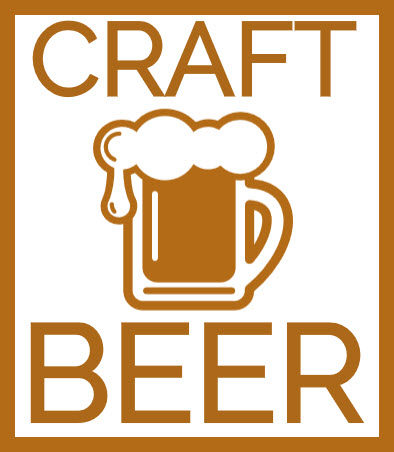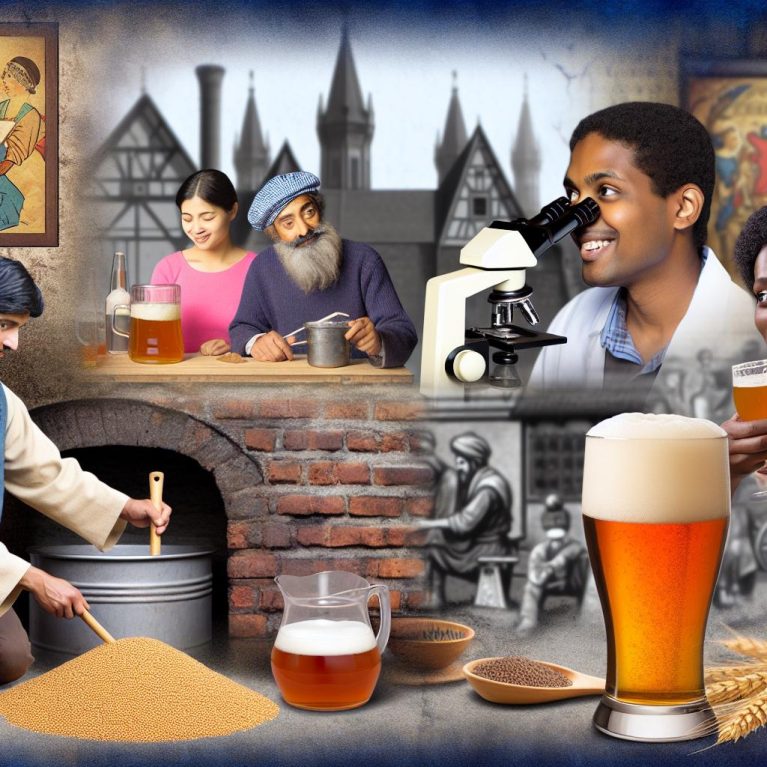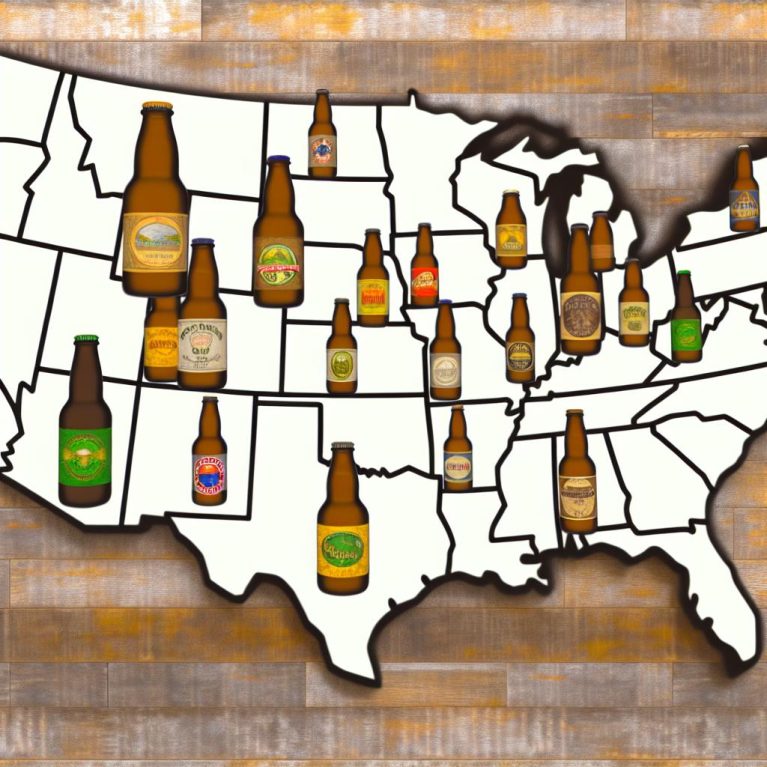The Origins of Homebrewing
The practice of homebrewing is an ancient art, steeped in history, that dates back thousands of years. Archaeological evidence indicates that ancient civilizations such as the Mesopotamians and Egyptians were some of the first to ferment grains, resulting in rudimentary forms of beer and other alcoholic beverages. For these early societies, fermentation was not only a method to create beverages but also a vital process of food preservation and a component of religious ceremonies and social gatherings. Over centuries, as humankind transitioned from nomadic lifestyle to settled agricultural communities, homebrewing became an integrated part of daily life.
This tradition of fermenting grains perpetuated through various cultures across millennia, and by the time of the colonial era in America, homebrewing had established a firm foothold. In those days, the settlers often brewed beer at home because commercial brewing options were either scarce or prohibitively expensive. Brewing at home offered a practical solution, enabling settlers to enjoy their brews without overly taxing their limited resources.
Homebrewing in the 20th Century
The beginning of the 20th century signaled an altered reality for the world of homebrewing, especially with the advent and subsequent enforcement of Prohibition in the United States, which lasted from 1920 to 1933. Prohibition was a nationwide constitutional ban on the production, importation, transportation, and sale of alcoholic beverages. This period significantly affected all brewing activities as they were deemed illegal. Consequently, homebrewing along with commercial brewing was forced to go underground, drastically reducing its prevalence and legality.
However, this suppressive era came to an end with the repeal of Prohibition in 1933, but homebrewing did not immediately bounce back to its prior levels of popularity. It wasn’t until the latter half of the 20th century, particularly in 1978, that a groundbreaking shift occurred: homebrewing was legalized at the federal level in the United States with the passage of a specific bill. This was a critical development, as the legislative change breathed new life into this ancient practice, sparking renewed interest and enthusiasm among potential brewers to explore and refine brewing techniques in controlled home environments.
The Homebrewing Renaissance
Following its legalization, homebrewing experienced a significant resurgence, accurately described as a renaissance, which played a formative role in the burgeoning craft beer industry. A newfound energy within the brewing community fostered intricacies in techniques, development of diverse recipes, and even advancements in brewing equipment. This renewed interest prompted the formation of various clubs and associations dedicated to homebrewing, such as the American Homebrewers Association. These organizations became communities where members encouraged one another, shared insights, and celebrated home-brewed creations.
This renaissance was characterized not only by a passion for brewing but also by a collaborative spirit that aided in the distribution and enrichment of technical knowledge, recipes, and brewing secrets, which further advanced the craft. Enthusiasts often gathered to exchange ideas and achievements, ensuring that this traditional practice was invigorated with modern innovations.
Influence on Craft Beer Brands
The ripple effect of the homebrewing revival was profoundly felt in the craft beer industry, as numerous successful craft breweries emerged from the dedicated efforts of individuals who started as homebrewers. Breweries like Sierra Nevada, Dogfish Head, and many others owe their origins and subsequent successes to founders whose experiences and passion originated from brewing in their garages and basements.
These breweries have often credited their roots in homebrewing for the innovative approaches and diverse beer offerings they provide. Unlike industrial-scale commercial brands that tend to prioritize uniformity and mass distribution, craft breweries are celebrated for their willingness to push creative boundaries, experimenting with flavors, brewing techniques, and local ingredients. This innovation-driven model has allowed them to carve out a unique identity in the larger beer market.
Technological Advancements
The progression of technology has significantly enhanced the homebrewing process, making it more accessible and precise than ever before. Recent years have seen various technological innovations such as the development of digital thermometers, automated brewing systems, and detailed brewing software programs. These advancements have empowered hobbyists to produce high-quality brews with greater consistency and control over the brewing environment.
Instruments now allow homebrewers to monitor the temperature and other critical brewing parameters with minimal effort. Automated brewing systems simplify the entire brewing process, making it user-friendly, even for novices. Meanwhile, brewing software aids in inventory management, recipe formulation, and even the prediction of resulting flavor profiles, ensuring hobbyists can focus on creativity and fermentation without being bogged down by logistical challenges.
The Growth of the Craft Beer Market
The influence of the homebrewing movement is particularly visible in the remarkable expansion of the craft beer market over the past few decades. Industry analyses show that the craft beer sector has experienced substantial growth, which is partly driven by changing consumer preferences. Contemporary beer lovers have exhibited a strong preference for unique, locally-sourced, and flavorful beers—qualities often pioneered by small-scale, independent brewers who began as homebrewers.
These consumer trends have been instrumental in boosting the craft beer sector, resulting in a more diverse offering of flavors and beer styles available on the market. This shift not only broadens the appeal of craft beers but also nurtures an appreciation for the artistry and skills involved in making distinct, high-quality brews.
Community and Culture
Homebrewing has fostered a dynamic community culture focused on experimentation and local collaboration. This is evident in the active participation and organization of craft beer festivals, the establishment of taprooms, and the proliferation of brewpubs. Such venues often serve as showcases for the creativity and diverse taste profiles cultivated within the homebrewing community.
Additionally, educational resources and workshops remain pivotal in supporting both new and experienced homebrewers. These initiatives provide the necessary knowledge and skills to maintain the practice’s popularity and relevance. As a result, homebrewing continues to be a fertile ground for innovation, encouraging enthusiasts to imbue traditional recipes with contemporary twists or to invent entirely new compositions.
Conclusion
The story of homebrewing encapsulates its longstanding cultural and economic contributions to the craft beer industry. From its ancient roots in early civilizations to its influential role in shaping today’s craft beer landscapes, homebrewing embodies the spirit of creativity and community among beer enthusiasts worldwide. As a continually evolving practice, it not only connects beer lovers to the history of brewing but also paves the way for further innovations in the brewing world. For those interested in delving deeper into the world of homebrewing, exploring its techniques, and understanding its contributions, one resource to consider is the American Homebrewers Association, which offers materials and support for brewers of all levels.




